How to Find a Climate Haven: The Ultimate Guide
The Most Comprehensive Step by Step Guide to Buying Climate Resilient Real Estate.

The Most Comprehensive Step by Step Guide to Buying Climate Resilient Real Estate.
About a year ago, after a ton of work, I finally found a climate haven! It was shockingly difficult. The conventional real estate platforms provided very little info on climate risks. Real estate agents were clueless. I spent about a year parsing through scientific research, data sets, and talking to experts to figure out where to find a safe place to live as the climate changes. Lucky for you, reader, I developed a method that will make it easier for you to find low-risk, climate-safe property. The following is my step by step method for finding a climate haven.
Full disclosure, this method takes a bit of work. But the good news is that understanding climate risks via this method will actually save you time and money in the home hunt. It will help you avoid costly damage to your future home. Most of all it will help you live a safe, lower stress life in a place you know will be at lower risk to climate catastrophe. Ultimately we’re building Lucid Home to transform this method into an instant, easy way to understand the risk to any property in the US.
Get a Lucid Home Climate Risk Assessment on a Property or Region
If you read the below method and are intimidated by the amount of research, fear not! The Lucid Home team can do the research for you. For a limited time we are offering custom reports and consultations.
Request a custom Lucid Home Climate Risk Assessment here.
We will send you a Lucid Home Climate Risk Assessment with detailed information on climate risks for any property or region in the US. The Lucid Home Climate Risk Assessment will be customized to the timeline that you intend to own the property. We are asking folks to pay what they can for the assessment, so pricing is up to you.
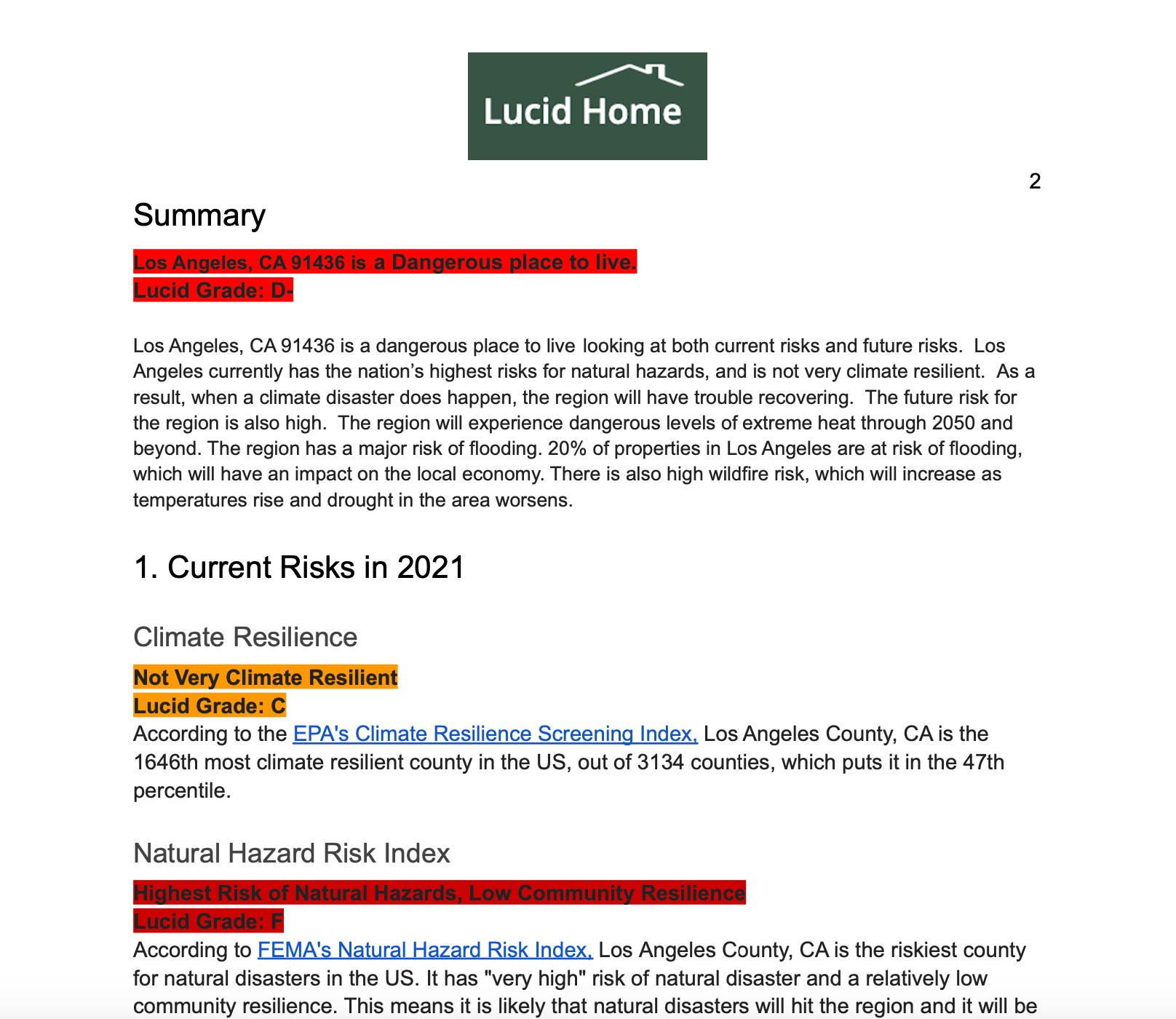
Soon the Lucid Home Reports will be automated and instant. Sign up here for early access to Lucid Home.
Why Buy a Climate Haven?
As I’ve written before Climate change is already an enormous threat. Whether it’s flooding in Germany and China, enormous wildfires in Oregon, megadrought in the southwest and California, or extreme heat in the Pacific Northwest, horrific climate catastrophes are making front page news on a daily basis. As it gets worse it will make parts of the world and the US unlivable. Even in the best scenario 40+ million Americans homes are at risk of climate catastrophes.
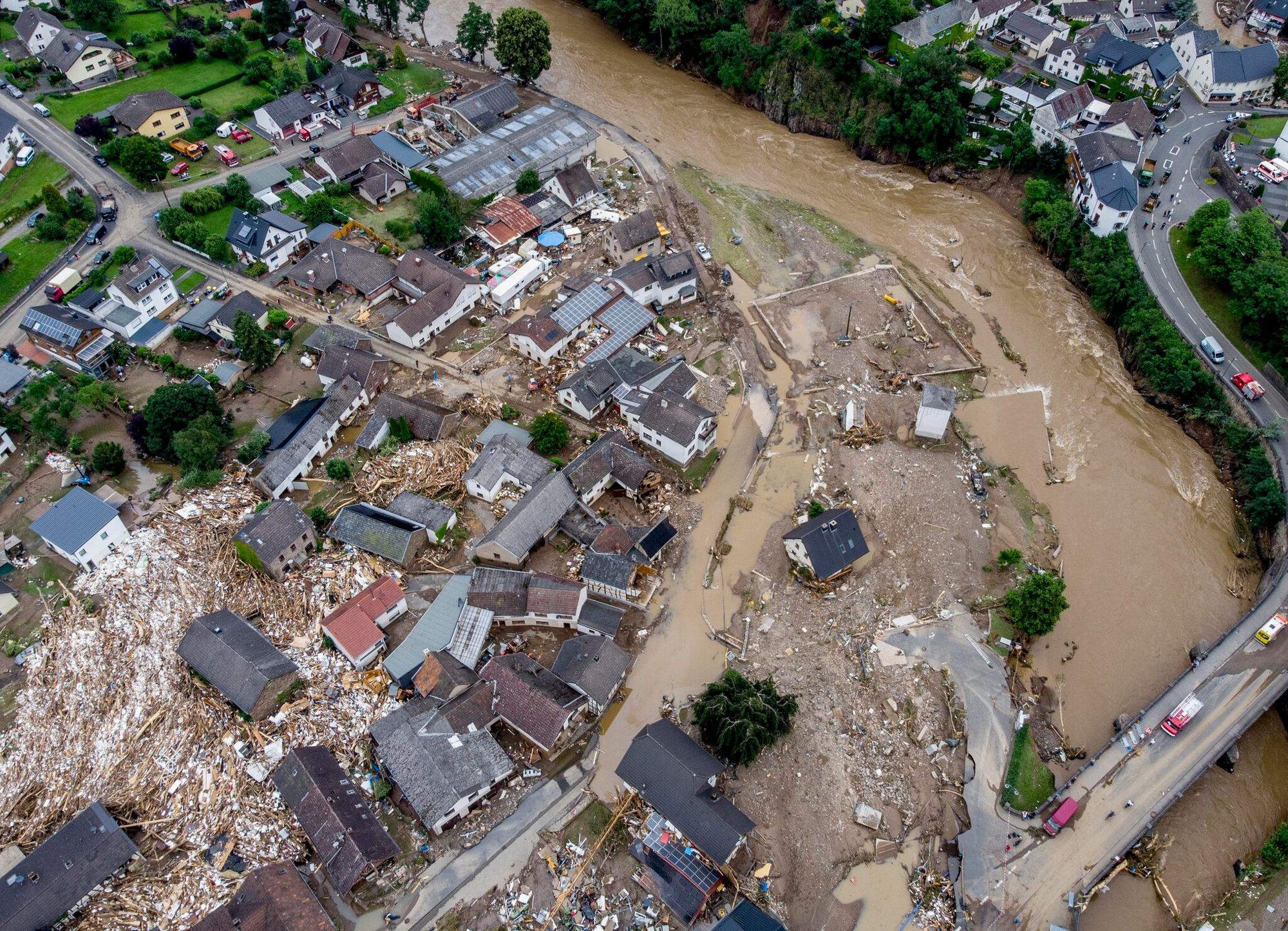
The good news is that there are plenty of places to live that have low exposure to climate risks. These places are Climate Havens and they are readily available. Often Climate Havens are under the radar and less expensive than high risk regions.
I repeat this in every blog post I write because it is so important to consider:
You don’t need to be rich to find a climate haven. You just need to be well informed.
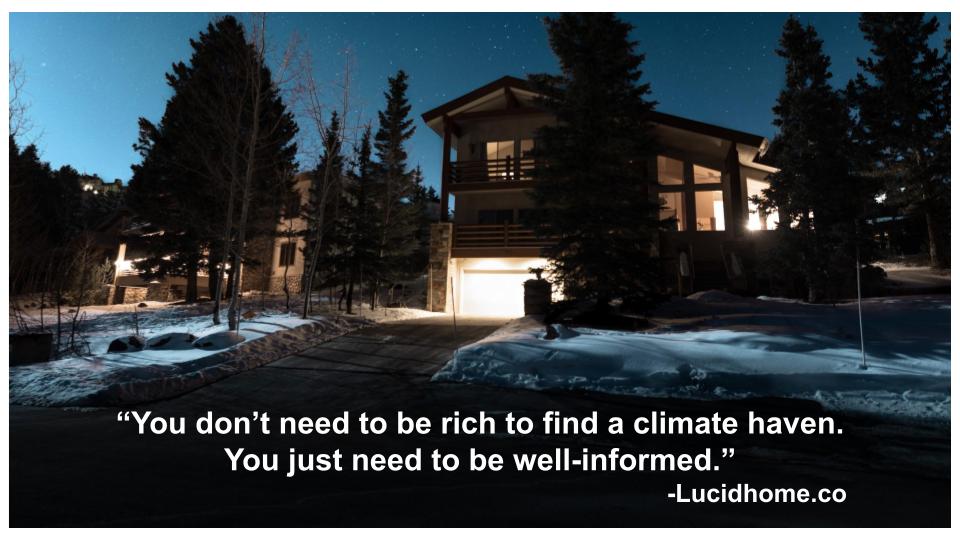
I hope sharing the method of finding a climate haven helps you get the info you need to find a safe, lovely place to live.
Our Climate Haven
My sister, my husband and I went in together to buy a climate haven. As I’ve written about previously, we all live in New York City, one of the riskiest places to live in the US when it comes to future climate catastrophes. We aren’t ready to leave NYC, but we wanted to find a place we could own long term that would be safe and a refuge as the climate changes.
I have a background in Climate Policy. I’ve worked in Washington DC writing bills to address climate change in the US Senate. I wrote energy and environment policy at the leading think tank the Center for American Progress. And I worked with clean-tech companies at a leading lobbying firm. With my experience, I knew where to start when researching climate change and climate risks. However I had no idea it would take so long.
The real estate platforms like Zillow, Realtor.com and Trulia didn’t have any info on climate risks. (Zillow and Realtor.com have since added flood risk, buried in their listing info, which is great!) Real estate agents bristled at the mention of climate change, and were pretty much uninformed. When we asked friends and family if they had tips on avoiding climate risks, they all came up blank.
So I set to work figuring it out. I read hundreds of articles, dozens of reports, and multiple books. I talked to experts across the field. I scoured esoteric open source, government research tools and the latest scientific predictions. Slowly I pieced together a method that led me to my dream Climate Haven.
The Climate Haven we found is deep in the Adirondacks, north enough to stay cool even as the climate changes, but close enough to NYC that it’s a manageable drive. Wildfire risk is low. It’s inland and not on a body of water, so flooding risk is low too. Bonus points it’s in the Adirondack Park, the largest park in the US, larger than Yellowstone, Yosemite, Glacier, the Grand Canyon, and the Great Smokies combined. The 6 million acres of the Adirondacks are designated as “forever wild” in the New York State constitution. That means there is very little pollution. It’s also bound to enjoy the climate protections of a natural woodland environment for a long time to come.

Here’s the Lucid Home Climate Haven Method that can help you too find a climate haven.
Step 1: Set Your Personal Parameters
Here are a set of questions you should ask yourself when you begin the house hunt:
- What region do you want to live in? Do you need to be near family? Near work? Set a radius or a region for yourself to narrow down the search. Alternatively if you have no geographic constraints, you will be more free to find the lowest risk, most climate resilient real estate.
- How long do you plan to own the property? The amount of time you plan to own the property will impact the level of risk exposure to consider.
- What is your risk tolerance? This might be linked to your financial situation. If the home represents a large share of your personal wealth you should be pretty risk averse. On the other hand if this is your 4th home and you just want to enjoy it for what it is now until it gets washed away, that's another story.
- What kind of environment are you looking for? Urban, small town, farmland, woodland, mountain, lakeside etc.
Step 2: Find a Climate Resilient County or Region
Note: If you already know what county or neighborhood you want to live in regardless of climate risks, skip to Step 3.
The goal here is to find a region and a county to live in that can withstand the impacts of climate change and can recover quickly if there is a climate catastrophe. This of course depends on your personal climate risk tolerance from step 1.
The EPA has developed a Climate Resiliency Screening Index (CRSI) that provides a climate resiliency rating for each county in the United States. Resilience means that the region has less exposure to climate disruptions and that it can recover more easily when climate threats do arise. The report explains it as:
“Climate Resilience Screening Index (CRSI) framework (Figure E-1) serves as a conceptual roadmap showing how acute climate events impact resilience after factoring in the county and community characteristics.” (page 13)
The CSRI does not make predictions. It is based on historic and present data. So it gives a snapshot of the current climate risks. But as climate risks get worse, I interpret it as indicating which counties will be a decent place to live as climate change gets more impactful. You can use the county ratings from the CRSI starting on page 198, to identify the best counties to invest in.
The map below visualizes the Climate Resilience Screening Index score of counties in the United States. The darker blue the more resilient.
You can use the CRSI to find the most climate resilient counties in the region that you’re considering. Here are the counties that caught my eye when I was buying property
- Kodiak Island, Alaska --> The most climate resilient county in America
- Juneau City, Alaska --> The second most climate resilient county in America
- Hancock County, Main --> The most climate resilient county in the lower 48 states of America
- Hamilton County, NY --> The most climate resilient county in New York State.
- Metcalfe County, KY --> The lease climate resilient county in America
FEMA’s National Risk Index is another great tool to evaluate counties. It will give you a sense of how the county ranks in the US compared to all other counties for Natural Disaster Risk. It also provides information on expected annual loss due to natural disasters, social vulnerability, and community resilience.
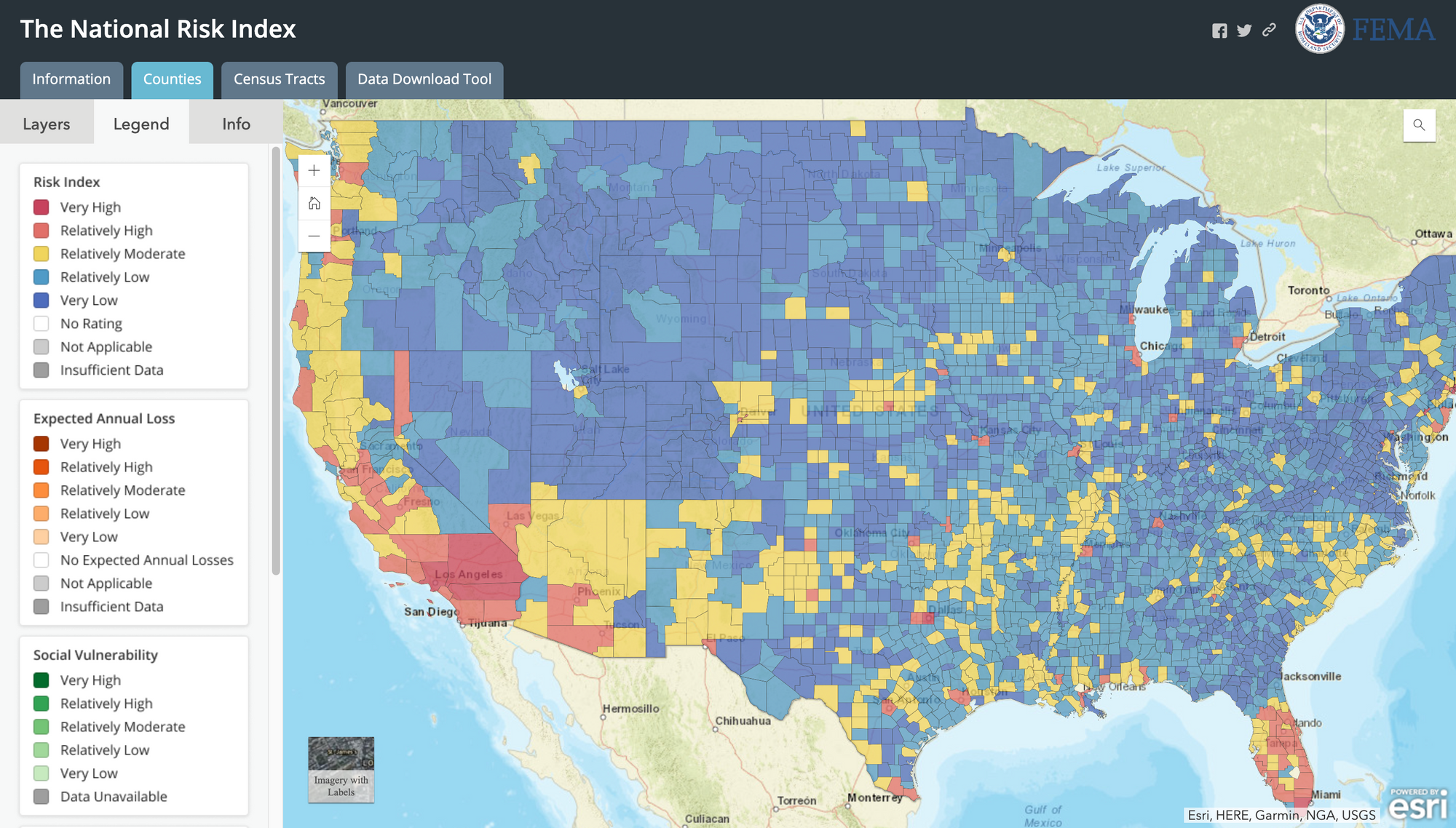
FEMA’s National Risk Index also provides risk profiles for 18 individual natural disaster hazards for the county including:
- Avalanche
- Coastal Flooding
- Cold Wave
- Drought
- Earthquake
- Hail
- Heat Wave
- Hurricane
- Ice Storm
- Landslide
- Lightning
- Riverine Flooding
- Strong Wind
- Tornado
- Tsunami
- Volcanic Activity
- Wildfire
- Winter Weather
Step 3: Research the County and Its Specific Climate Risks
Once you’ve identified an attractive county, the next step is to dig into the county’s specific climate risks to make sure you feel comfortable living there. Every region will have some risks, so it’s best to understand them and make sure they line up with your personal risk tolerance.
Specific things to research and related links
- Climate impacts on Temperature and Precipitation. Use NOAA’s Climate Explorer Tool. The tool provides county-level data specifically for current and future temperature and weather risks. In particular pay attention to very hot days, heavy precipitation, days below freezing, and warm nights.
- Flood projections and elevation. First Street Foundation’s Flood Factor for current and future flooding risks. USGS Flood Mapper tools also provide additional insights.
- Wildfire risk. Use the USDA and US Forestry Service’s Wildfire Risk to Communities Mapper.
- Potential climate impacts to water quality. Use the Better Assessment Science Integrating Point and Non-point Sources (BASINS)
- Projected Land Use to understand how the region’s environment and land will change. Use the EPA’s Global Change Explorer
- Superfund sites. Understand how many superfund sites are in the region. While this is not necessarily a climate risk, it will have an impact on your health. Climate risks like flooding and wildfire may cause superfund sites to overflow or contaminate nearby homes. Use the EPA’s Superfund Site Mappers.
- Nuclear waste storage sites and nuclear facilities. Similar to superfund sites, Nuclear waste storage sites aren’t a climate risk. However, climate risks like flooding and wildfire could cause nuclear facilities and waste storage sites to contaminate nearby homes (think Fukushima Nuclear Disaster from flooding in 2011). Use the U.S. Nuclear Regulatory Commission’s list of Nuclear Facilities and the U.S. Congress’ list of Nuclear Waste Storage Sites.
- History of disasters and loss. Use the Spatial Hazard Events and Losses Database (SHELDUS) - need university library access
- Migration. Understand whether people are moving to or from the region. Research why. Use the U.S. Census County Migration Patterns data.
Step 4: Find a Climate-Knowledgeable Real Estate Agent
A real estate agent can help you understand the region and the anecdotal risks people are already experiencing. They should have a sense of which properties have already experienced damage from flooding, wildfire and other climate related hazards.
The real estate agent is generally incentivized to get you to close the deal. So most agents will not want to discuss climate risks or negative attributes of the house. This is why finding a frank, honest, and well informed real estate agent can be incredibly helpful.
We found a real estate agent in the Adirondacks who was a local and was intimately familiar with the area’s flood history. She told us about a huge flood "the Halloween flood" in 2019 that had washed away entire towns. She knew which properties had flooded and which had stayed dry. This was incredibly helpful information for our search.
Informed by our real estate agent, we stayed away from lakefront and riverfront properties and found a great house on elevated ground in the mountainous area.
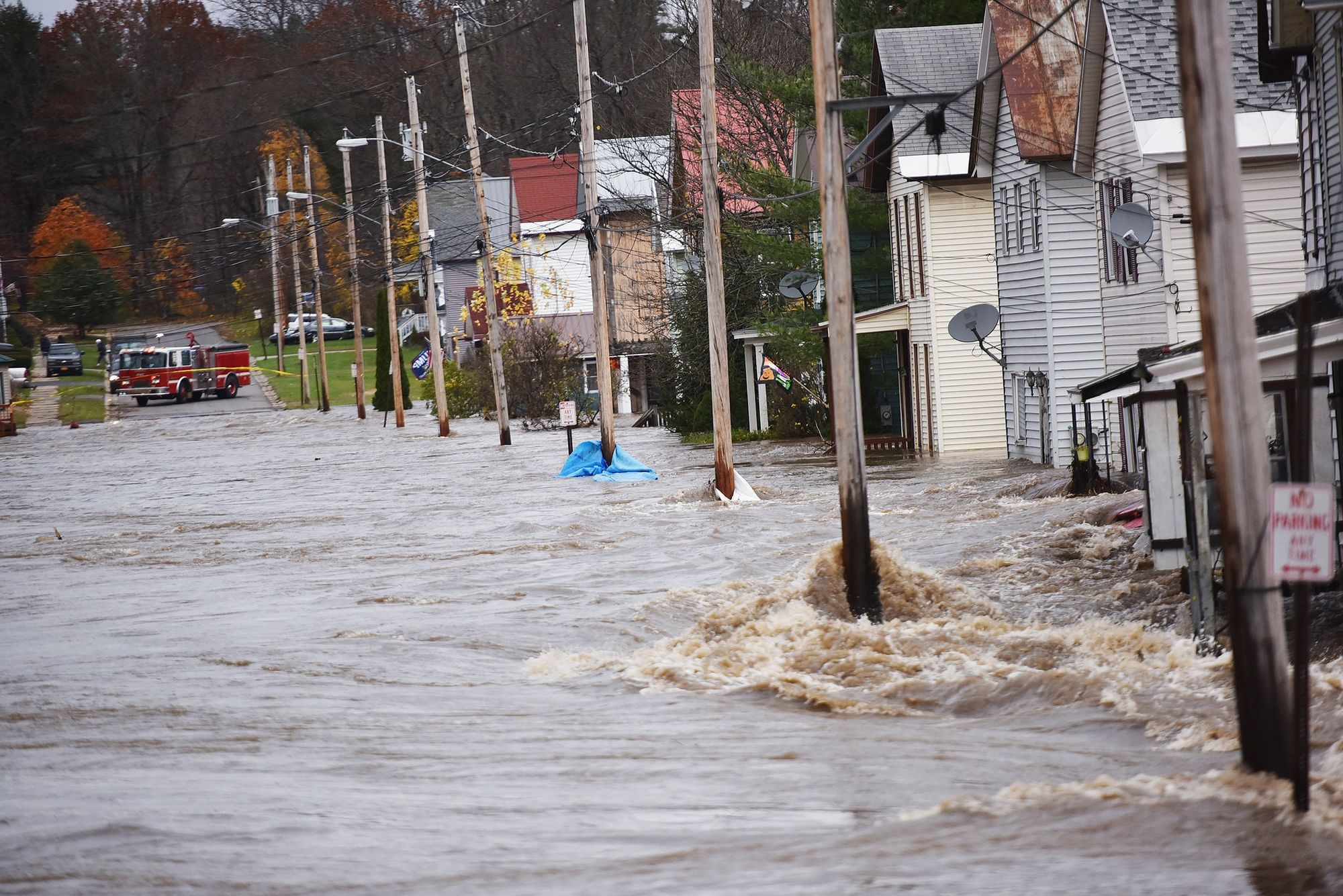
Step 5: Evaluate Specific Property: What to Look for and What to Avoid
You’ve found a climate resilient county and a knowledgeable real estate agent. You’re starting to look at properties in the county or in specific cities, neighborhoods, or towns you like.
Great work! Now it’s time to evaluate the specific property for climate risks and other environmental risks, particularly during the time period you’d like to live there.
When evaluating property research the following attributes:
1. Flooding. Consider the pr0perty's proximity to floodplains, history of flooding, and predictions for floods. Flooding risk can change on a block to block basis. One side of the street might flood while the other remains dry. Use First Street Foundation’s Flood Factor for current and future flooding risks. NOAA also has a great Sea Level Rise viewer and the USGS has even more Flood Mappers.
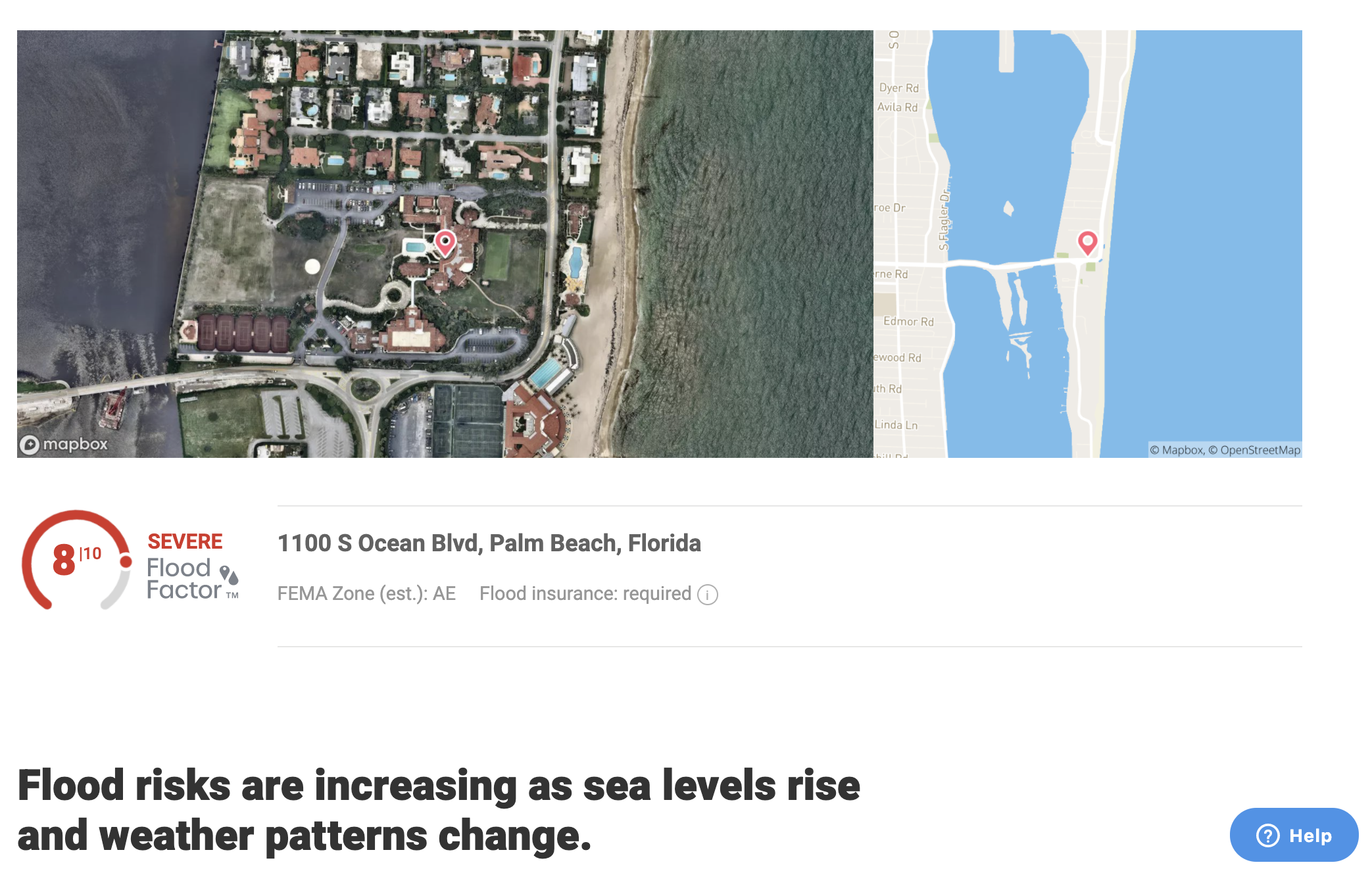

2. Wildfire. Wildfire can also change on a block to block basis, though it is very difficult to predict at the property level. If you are in a county with some risk of wildfire, look into local wildfire records to get a sense of how close wildfires have historically come to the house. Use the USDA and US Forestry Service’s Wildfire Risk to Communities Mapper.
3. History and risk of extreme weather. Research and ask the locals about extreme weather events that have happened in the last few years, decades, and what are predicted -- this includes hurricanes, tornados, heat, draught, high winds etc
4. Water access. You’ll need to dig into the deed/title and the local water rules. Questions to ask the seller and real estate agent include: where does the water supplying the property come from? How long will that aquifer remain stable? Who owns the rights to the water on the property? How has the local government been maintaining the water system?
5. Insurance. Ask insurance companies if they insure the property for all potential causes. Is there anything they won’t insure? Insurance companies provide 1 year contract, so even if they agree to insure the property this year, they might not insure it in the future -- look into longer-term insurance research and projections
6. Environment and pollution. Environment and pollution aren’t exactly a climate risk, but they could be exacerbated by climate catastrophes like flooding, wildfire, and extreme heat. Understand local air polution using the EPA’s Air Now tool to understand air pollution. Look into any environmental disasters in the region using the EPA’s Superfund Site Mappers. Understamd what factories, manufacturers, large scale agriculture or livestock facilities nearby, and how that will change in the future using the EPA’s Global Change Explorer. Also research what kind of waste is produced and where does it go? If you find concerning nearby environmental hazards, consider doing an environmental assessment to understand the risks on the property.
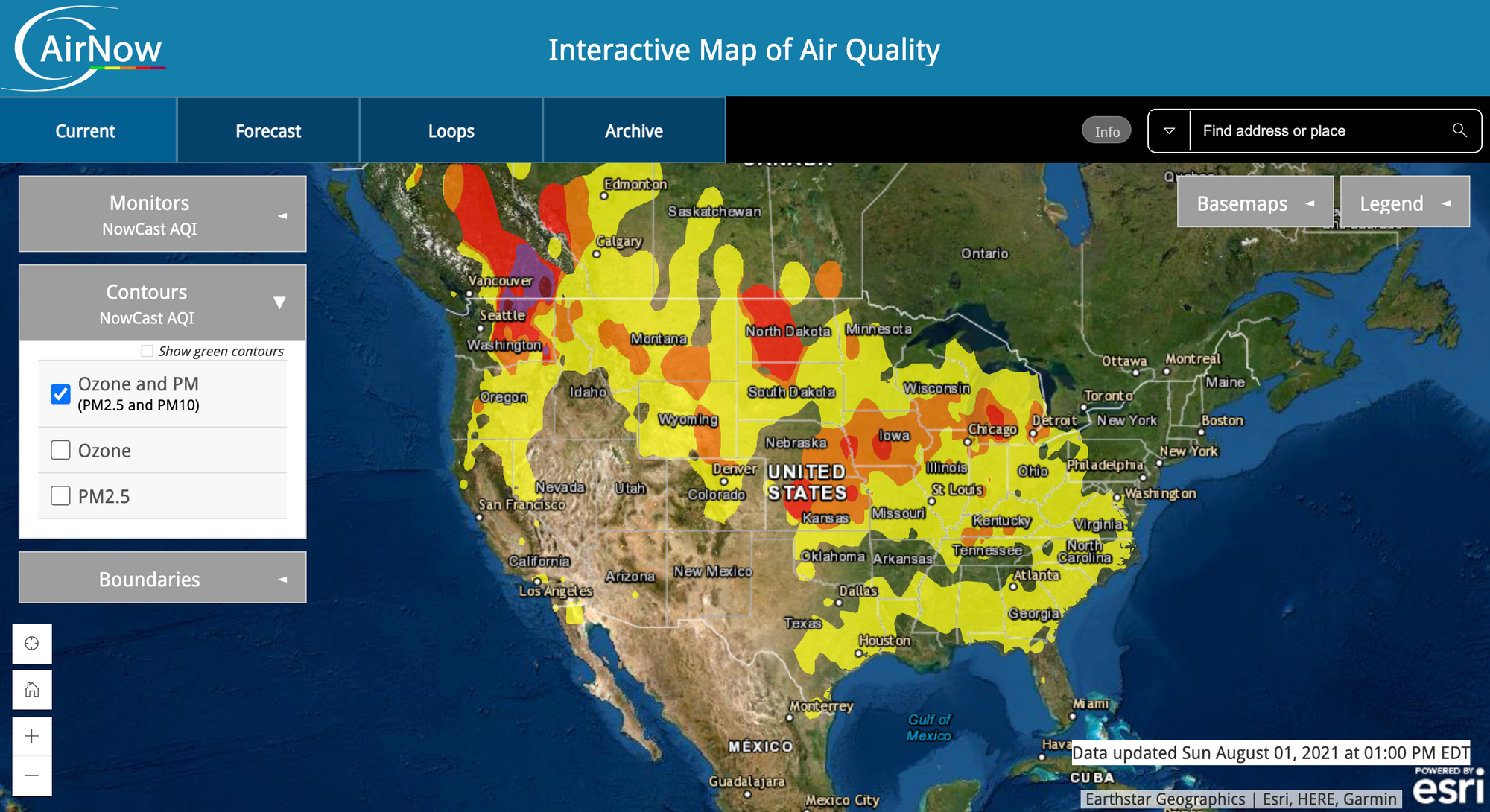
7. Access. Are there multiple roads to access the property? It’s risky if there’s only one access road because it could get washed out or blocked in a flood or wildfire.
8. Infrastructure and local government preparations. Talk to the local government to learn if they have invested in proper infrastructure like drainage, sewage, waste management, water treatment, etc to prepare for local effects of climate change.
Benefits of the This Method to Find a Climate Haven
The method above is a bit of work, but it works. I found it 100% worthwhile to spend some time researching the risks above, in order to find a home I feel safe and secure in for decades to come.
Counterintuitively, I also found that this method made it easier and faster to find a home. The research up front saved time and prevented us from wasting time looking at dangerous properties. It required me to get really specific and narrow down regions and profiles of homes from the very beginning. Once we identified the county and that we needed to avoid lakefront and riverfront property, that limited our selection a good deal. As a result, we didn’t waste time looking at houses that weren’t a good fit.
The worst thing would be to fall in love with a house, and then run the method above only to discover that the house is at risk of flood, wildfire, or extreme heat, or that it is on a superfund site.
This method will help you save time and find a safe, low-risk climate haven that will be lovely to live in for years to come, even as the climate changes.
We'll Do the Work for You. Get a Lucid Home Climate Risk Assessment.
If the above sounds like too much work we can do it for you.
Request a custom Lucid Home Climate Risk Assessment here.
We will send you a Lucid Home Climate Risk Assessment with detailed information on climate risks for any property or region in the US. The Lucid Home Climate Risk Assessment will be customized to the number of years that you intend to own the property. We are asking folks to pay what they can for the assessment, so pricing is up to you.
A Faster Climate Risk Assessment is Coming!
Lucid Home will help you understand climate risks to properties or regions in seconds. We are building it with the most up to date science and our proprietary machine learning algorithms to predict climate risks according to your timeline.
Sign up here for early access to Lucid Home.
Join the Climate Haven Facebook community to connect with others finding/building a climate haven.
About the Author: Lisbeth Kaufman
Lisbeth Kaufman is Cofounder of Lucid Home. She is also an Entrepreneur in Residence at the Entrepreneurs Roundtable Accelerator (ERA). Lisbeth has been working on Climate Change policy since 2010, at the Center for American Progress and as a Senate Staffer focused on energy, environment and Agriculture. She has a BA from Yale, and an MBA from NYU Stern where she was a Dean’s Scholar.
